Edible herbs are some of the most rewarding plants to grow.
They add delightful beauty and fragrance to the garden and deliver amazing flavors for beverages, the grill, and your favorite recipes.
Highly aromatic with pretty flowers, they also attract helpful pollinators to the garden, like bees, butterflies, and hummingbirds.
And they make the best companion plants, adeptly driving away pests from flower beds and vegetable crops with their intense essential oils.
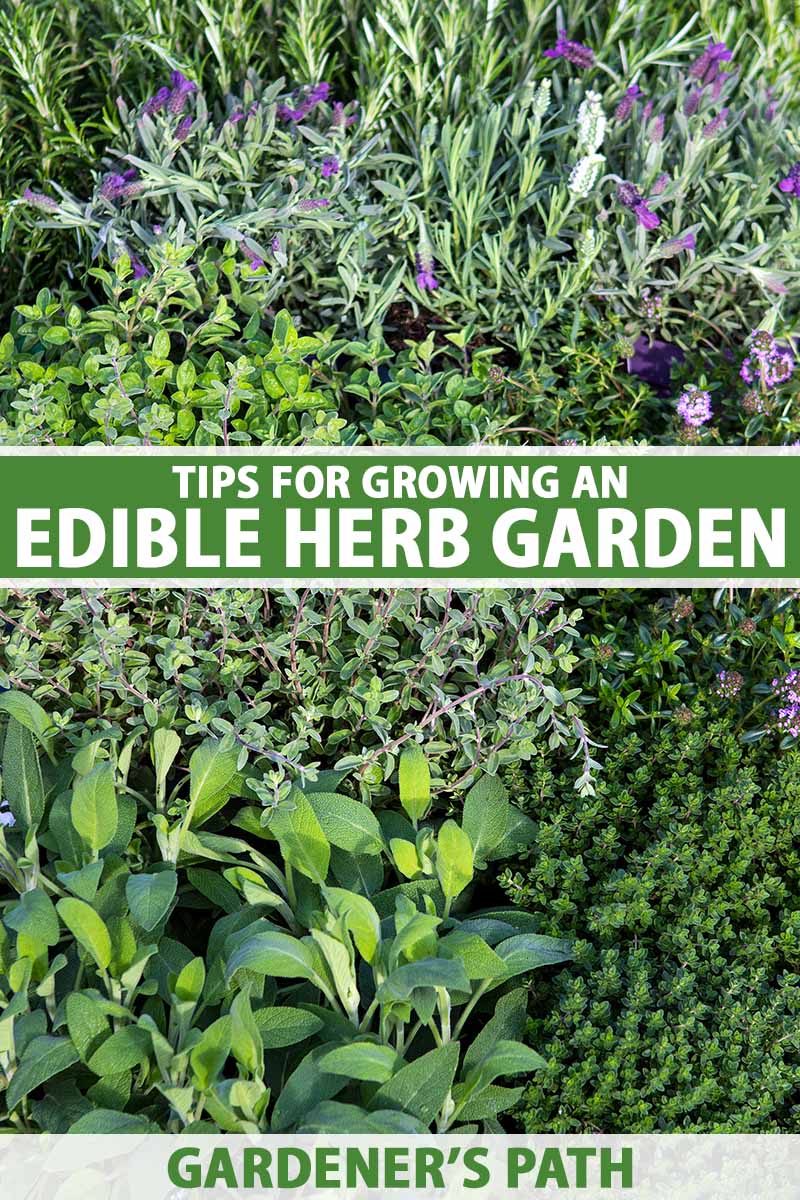
We link to vendors to help you find relevant products. If you buy from one of our links, we may earn a commission.
Wonderfully low maintenance, they’re simple and easy to cultivate and propagate readily from cuttings, seed, or root division.
And they’re quite happy when grown in containers and pots – perfect for small spaces, apartment balconies, and patios.
If that sounds like something you could use more of, join us now for all the best tips for abundant, edible herb gardens!
Here’s a preview of everything we’ll cover:
What You’ll Learn
If you are new to gardening, check out our guide to starting your own herb garden.
Annuals and Perennials
When planning your edible herb garden, it’s helpful to understand which varieties are annuals and which are perennials.
Popular perennials such as chives, lavender, oregano, sage, and thyme do not need to be replanted each year. Think of these plants as your foundation pieces that have a permanent spot suitable for long-term growth.
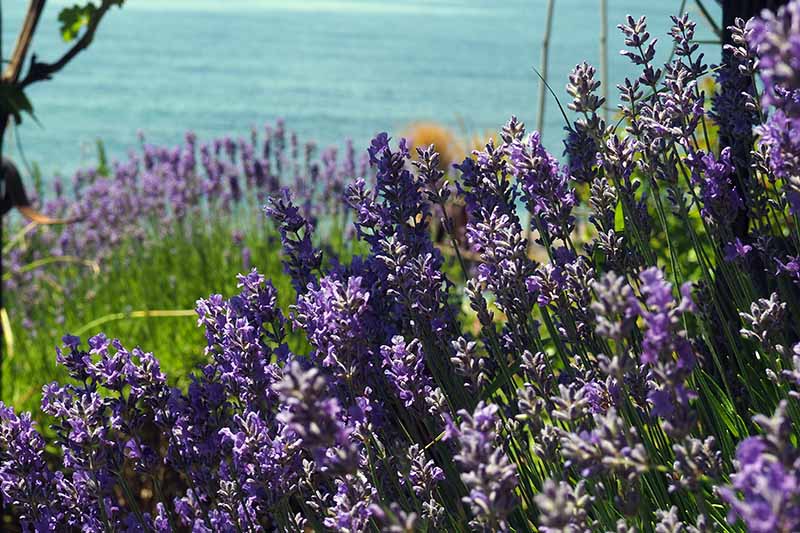
However, annuals like basil, cilantro, and summer savory are cold tender and need to be sown yearly.
These can be planted in your remaining garden space and changed around from year to year until you find the sweet spot for all your favorites.
Biennials like dill and parsley often grow for two years before setting seed, but leafy production in the second year is limited to spring growth – it’s best to grow these as annuals, with a few plants allowed to remain for seed collection.
Select Ones You Enjoy
You’ll get the most enjoyment, and value, from cultivating the herbs you frequently use in day to day cooking.
For example, if you make a lot of Italian dishes, grow plants like basil, rosemary, and oregano. For Asian dishes, try Thai basil, lemongrass, and coriander (cilantro seeds).
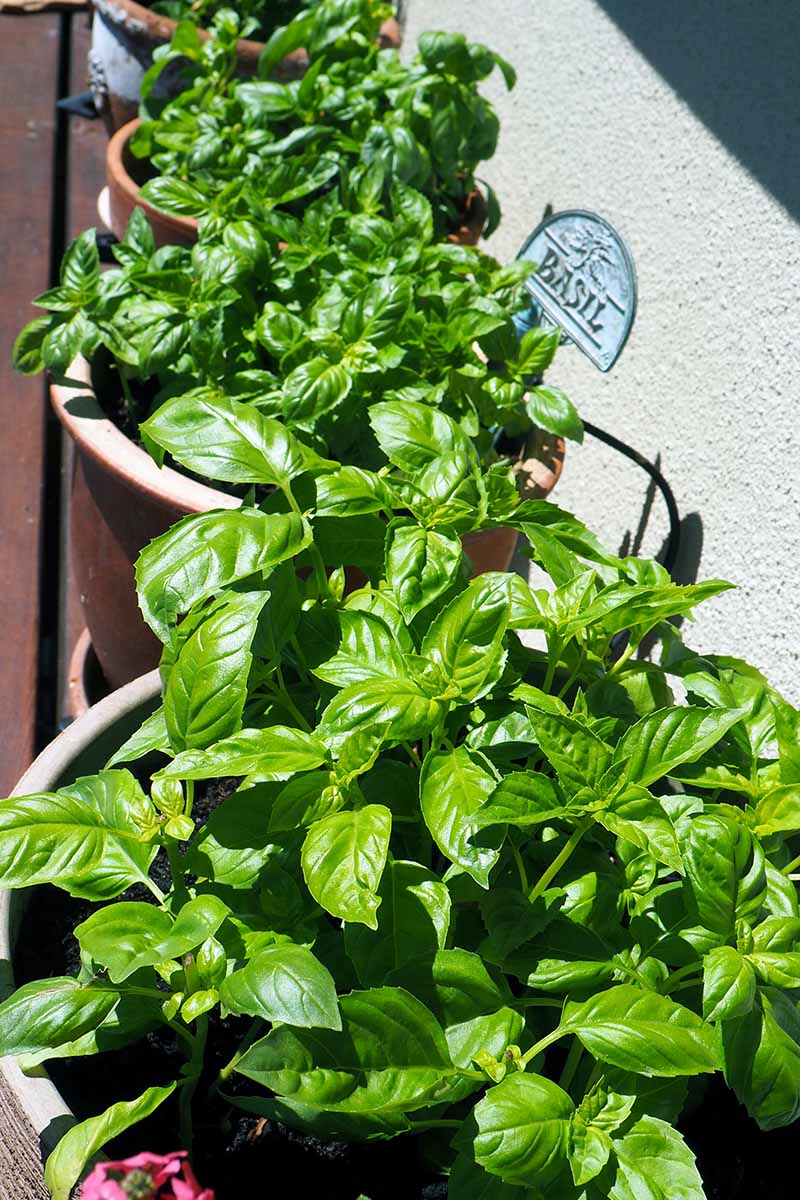
Or if you start the day with a power smoothie, cultivate plenty of basil, mint, and tarragon.
Whatever your favorites may be, you’ll love the incredible, fresh flavors and convenience of having your own plants to harvest.
Direct Sowing
Direct sowing annual seeds offers much better economy than purchasing plants at the garden center – and it’s a lot more fun growing them too!
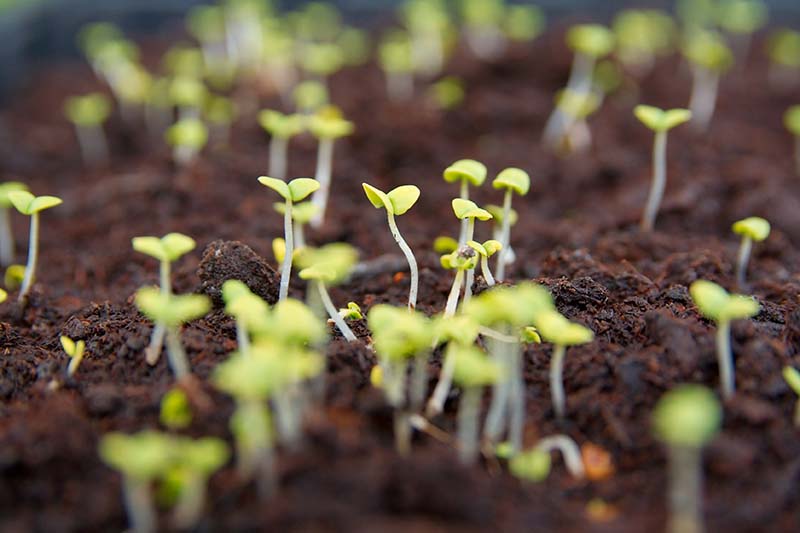
Direct sow outdoors after all danger of frost has passed. Or start seeds indoors about six weeks before your last frost date.
Annuals such as basil, chervil, cilantro, German chamomile, and summer savory typically reach maturity in three to four months, then decline as they flower and set seed.
To prolong their growing season, repeat sow every four weeks until midsummer.
This way, the new plants will be reaching their prime as the old ones start to fade, and you can enjoy an abundant supply of fresh leaves right into fall.
Plant Propagation
Most herbs flower in spring and summer, which makes fall a good time to propagate perennials.
Root division gives the best results for propagating herbaceous perennials such as chives, mint, and oregano. You can read all about root division in our complete guide to dividing perennials.
Stem cuttings are the best way to propagate woody subshrubs such as lavender, rosemary, thyme, and sage.
Take stem cuttings from spring to midsummer and follow the steps in our guide on how to grow lavender from cuttings – the same process can be used for all the woody subshrub varieties.
Sun and Shade
Most herbs need a full sun location where they receive six to eight hours of full sun daily.
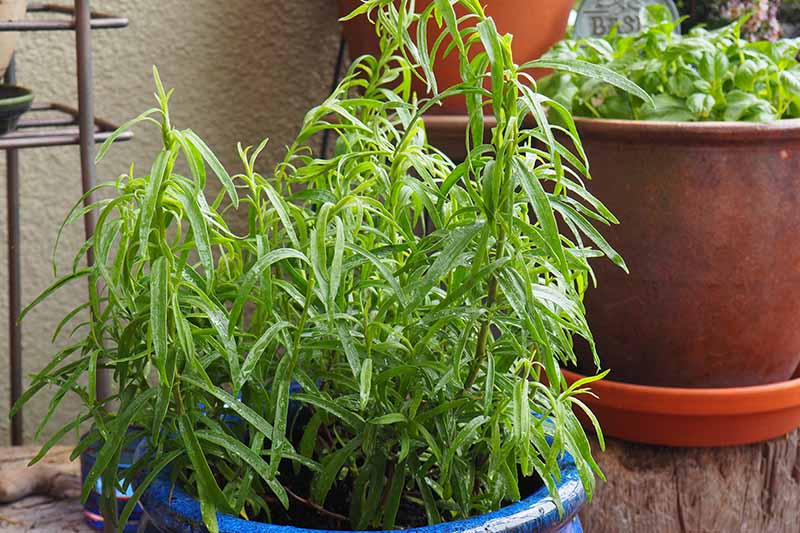
However, there are exceptions. Like tarragon, which can wilt in full sun when temperatures climb above 80°F. And chives, mint, and parsley can also tolerate partly shady conditions.
Check the growing instructions for individual plants to ensure they get the correct amount of sunlight.
Soil Requirements
A number of popular kitchen herbs are native to hot, dry regions like the Mediterranean and grow in lean, gritty, and well-draining soil.
This is one of the reasons they’ve developed intense flavors and fragrances. The harder they have to work for nutrients, the more essential oils are produced.
That said, it is helpful to amend your garden soil before planting with two to four shovelfuls of aged compost or well-rotted manure.
Enriching the soil this way gets plants off to a healthy start and is often enough to provide nutrients for the entire growing season.
Also, for heavy soil, amend with a shovelful or two of landscape sand or pea gravel to improve drainage. Well-draining soil is needed to prevent root rot – a deadly disease caused by roots sitting in overly moist or wet soil.
An alternative for heavy soil is to grow a selection in raised beds or containers.
Location
Some heat-loving perennials, like rosemary, will fare better if given a somewhat protected location, particularly if you have cold winters.
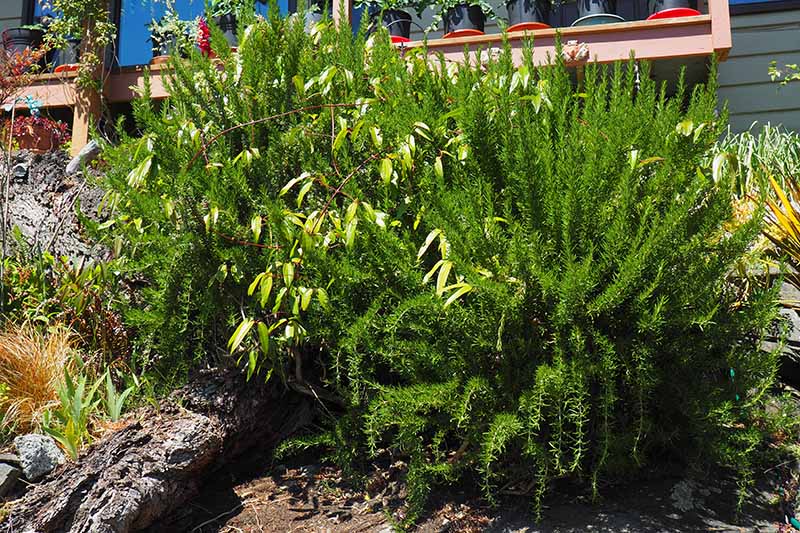
Create your own microclimate by giving them full sun in a warm, sheltered spot close to fences, foundations, retaining walls, or stumps.
These spots reflect heat to their back side and provide relief from winter’s cold temperatures and strong winds.
Watering Needs
Several species, such as oregano, rosemary, thyme, and sage, are drought tolerant once established.

However, they still need some water, especially in hot, dry spells. But don’t kill them with kindness. Too much water can result in lush growth, but at the cost of weak, diluted flavor.
Those that prefer dry soil should be watered by soaking deeply, then allowing the top two inches of soil to dry out again before watering next.
Others, like basil, parsley, and stevia, require more consistent moisture, allowing only the top inch of soil to dry before watering deeply.
And some, like bee balm, meadowsweet, and mint, prefer evenly moist soil. A summer mulch of straw or leaf mold can help these plants to retain moisture.
When planning your garden, it’s helpful to group together like-minded herbs – those with similar moisture and sun requirements. This makes it easier to ensure each plant gets the best conditions for optimal growth.
Fertilizers
Fertilizing herbs should be undertaken with a light touch.
As with watering, too many nutrients produce abundant growth but reduce the quality of aromas and flavor.
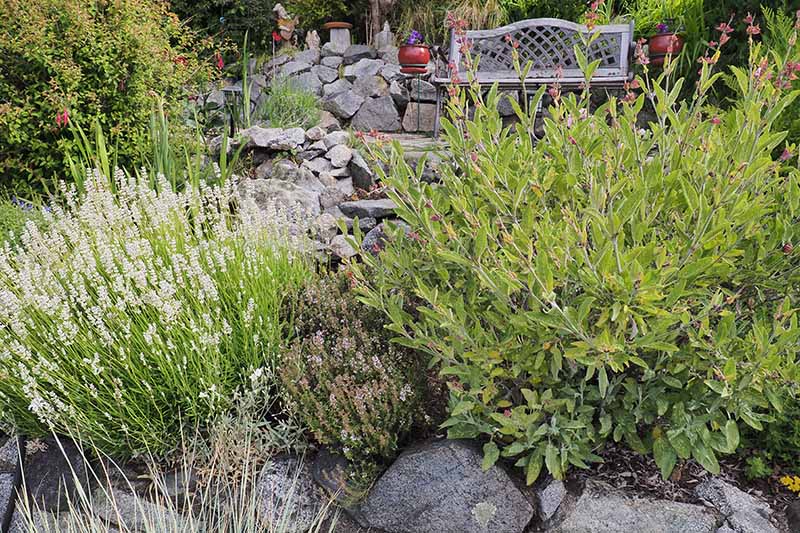
In their first year, most subshrubs or woody plants grown in the ground rarely require extra feeding if the soil was amended with compost or manure at planting time.
And for established plants, a top and side dressing of compost or well-rotted manure typically provides the nutrients needed for the entire season.
To side dress, liberally but gently work compost into the soil around the plant root zones in early spring, working out from the crown to the dripline.
Finish with a two-inch topdressing of compost on the surface of the root zone. Take care to keep the stem base above the crown dry and clear of compost.
Container plants require a bit more help with nutrients. For these plants, feed lightly with an all-purpose fertilizer as described below.
Container Care
Most herbs that make a pretty, aromatic, and convenient addition to kitchen and patio gardens are easily grown in containers. You can find full details in our guide to growing herbs in containers.
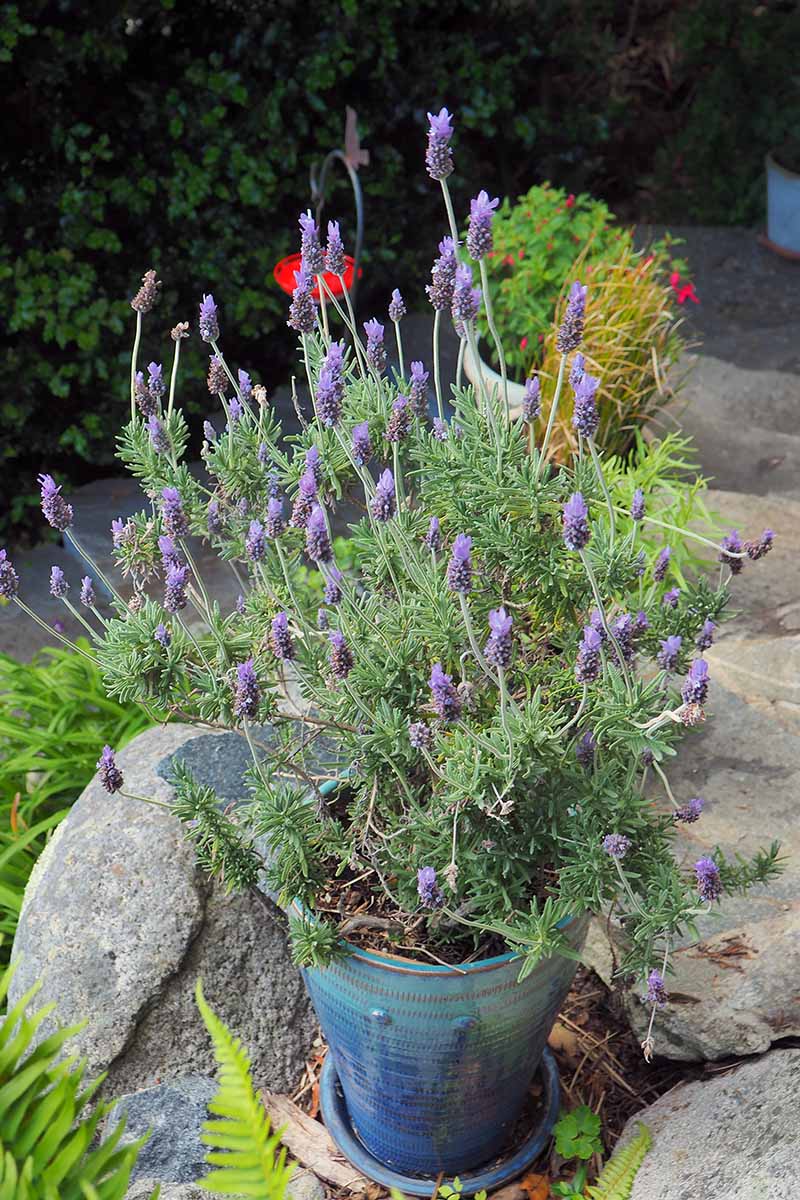
For best results, use soil that’s light and well-draining, and ensure pots and containers have drainage holes.
Place them in a full sun location, or a site with light afternoon shade.
Water when the top inch of soil dries out, and ensure plants have good air circulation.
Container plants typically require more feeding than in-ground plants, and herbs can be fed lightly with an all-purpose 10-10-10 (NPK) fertilizer two or three times during the growing season as needed.
To Flower, or Not?
Many herbs have beautiful, aromatic flowers that are also flavorful when used in cooking. And they make an outstanding addition to bouquets and posies.
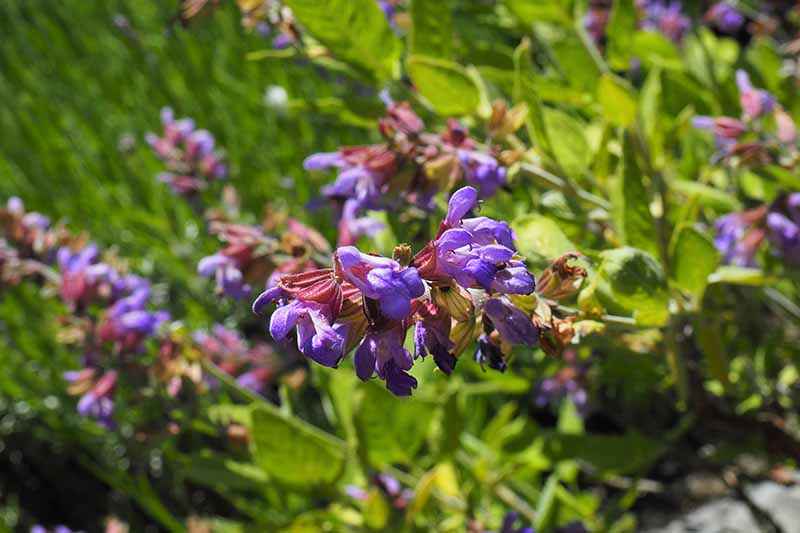
Plus, they do a fantastic job of attracting pollinators to the garden, such as bees, butterflies, and hummingbirds.
Flowering perennials like lavender, rosemary, and thyme add outstanding color and fragrance when blooming, and should be allowed to flower freely. After flowering, they can be deadheaded or pruned and shaped to retain plant vigor.
However, some leafy annuals and biennials, such as basil and parsley, tend to lose flavor and may become bitter if allowed to flower. For these plants, continuously pinching out terminal stems delays flowering so you can continue to enjoy the leaves for a longer period.
But if you want to collect seeds from leafy herbs, or allow them to self-seed, you must allow a few plants to flower.
About six weeks before the end of the growing season, choose a few plants with budding stems to flower for autumn seed collection.
Plants grown specifically for their seeds, like caraway, coriander, dill, and fennel, must be allowed to flower in order for seeds to develop.
Pruning
Pruning perennial herbs is best done in late winter or early spring, just after new growth begins to emerge. Pruning at this time encourages new growth and branching.

Cut back stems by one-quarter to one-third – and no more than one-third – and remove any dead, brittle, or awkwardly positioned branches. Make clean cuts with sterile pruners or saw just above leaf nodes.
Larger subshrubs such as lavender, rosemary, sage, and thyme can become overgrown or “leggy” over time, showing bare woody bases.
To renew leggy plants or to control their size, perform a hard prune by cutting up to one-third of their height in early spring after new growth forms.
Avoid cutting low into bare brown wood as this can kill plants, and ensure your cut is above green growth. For plants that are severely leggy, you may have to repeat this procedure the next spring as well.
Most subshrubs will reform into pleasing shapes with plenty of flowers within two to three years.
A second, lighter trim can be applied after plants have flowered. This improves vigor by diverting energy away from seed production and into new leaf and root formation.
Trim to deadhead flowers and remove any weak or spindly branches. With a light touch, snip back into shape as desired.
It’s important to remember not to prune too late in the season. Pruning encourages tender new growth that can be killed by frost, which then stresses and weakens plants. The best rule of thumb is to make cutbacks shortly after flowering is finished.
And as a side note, don’t throw away larger stems that are half an inch in diameter or larger after pruning.
Hang these to dry, then strip them of their leaves and small branches – they’re great on the grill for adding savory, smoky flavor to fish, meat, poultry, and veggies.
Cut stripped stems into two- to six-inch lengths and store them in a cool, dry location. Soak in water for two to three hours before placing on the grill.
Harvesting
The best time to harvest flower heads, leaves, and seed heads is in the morning.
Wait until the dew has evaporated, but before the sun is shining on the plants.
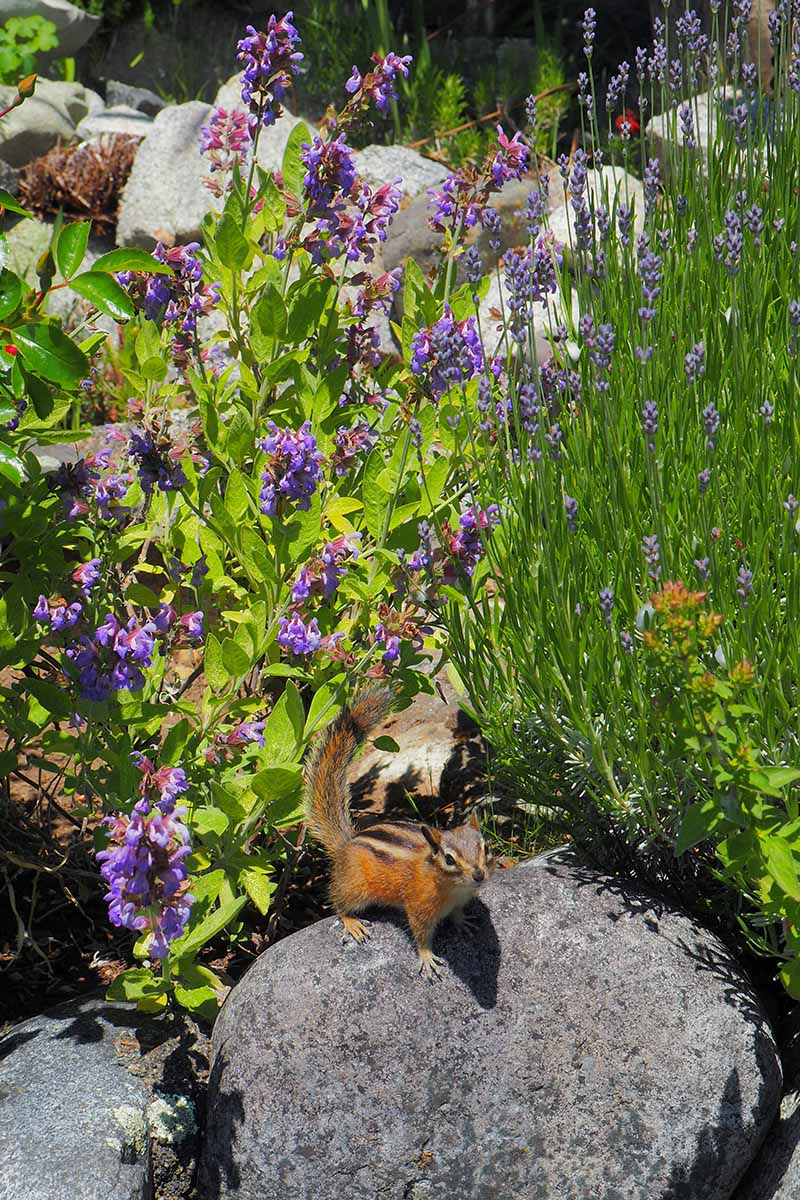
This is when plant parts contain the most essential oils and have the fullest flavor. Once the sun hits the plants, oils are released into the air.
Choose newer leaves for their tender texture and higher levels of essential oils.
Flowering herbs such as borage, chamomile, and lavender are best harvested before flowers are fully open. Harvest in the morning once flower heads are dry of dew.
For edible seed collection from plants like coriander, caraway, and dill, wait until the flower heads are faded and starting to dry, changing color from green to tan. Clip flower heads and place them in paper bags to dry.
Root crops like ginger, ginseng, and goldenseal are dug up at summer’s end or in early fall.
Preserving
For herbs, the most common preservation methods are drying and freezing.
Air dry leafy herbs and flower heads by gathering six to 12 stems into bundles and securing them with string. The smaller the bundle, the faster they’ll dry.
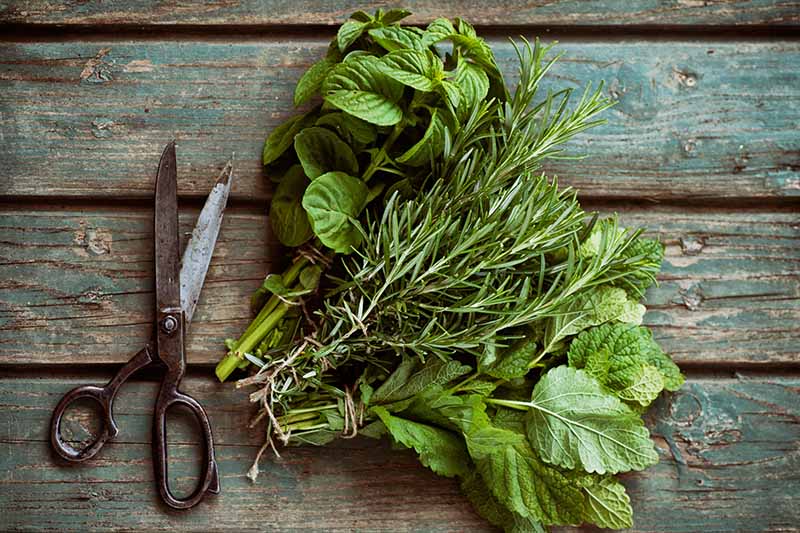
Place bundles inside perforated paper bags, stem side up, then lightly tie off the end of the bag around the stems, taking care not to crush the leaves.
Hang in a warm (70°F or above), dry environment with good air circulation for one to three weeks until dry.
When dry, gently crumble leaves from the stems. Store in glass containers with a tight fitting lid in a cool, dark cupboard.
For edible seeds, drying can take up to six weeks.
Once dry, shake the upside down flower heads inside their paper bag to dislodge the seeds. Storage is the same as for leaves.
Leaves and seed pods can also be dried in a food dehydrator set to the lowest setting.
Drying roots like ginseng requires good ventilation and a consistent air temperature above 70°F.
Cleaned roots are dried on racks or screens set at least six inches above ground level to provide air flow, and occasionally rotated to ensure even drying. Small roots can dry in one to two weeks, large ones can take up to six weeks.
Store dried roots in paper bags or boxes. Never store them in non-breathable materials like plastic, which can increase moisture levels and cause mold or rot.
For more tips, read our complete guide to drying garden herbs.
Freezing is another good option and typically retains flavor better than drying. For all the details on this method, check our guide for the five best ways to freeze fresh herbs.
Winter Care
For annuals, clean up any plant material from containers or garden beds in late autumn to discourage overwintering pests.
If your winter temperatures dip to freezing, provide perennials with a thick, two- to four-inch straw mulch to protect the crown and roots.
Move containers to a protected location and mulch heavily if needed.
Find more tips on winter care here.
Spring Prep
Clean up beds and remove winter mulches.
Top and side dress perennials by working a two-inch layer of aged compost or manure into the soil from the crown to the dripline.
Clean away any dead or broken stems, and prune lightly to encourage new growth and branching.
Learn more about herb garden spring care here.
Enjoy the Bounty
With attractive flowers, heady fragrances, and the best pest-busting properties, edible herbs are the perfect crop to enjoy in the garden and in the kitchen.
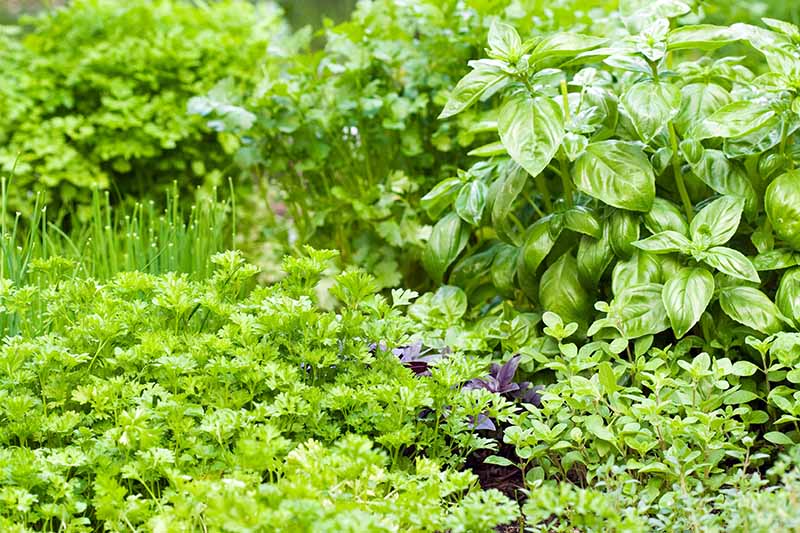
And nothing compares to the freshness and fantastic flavors of your own homegrown herbs in beverages, grilled foods, and favorite recipes!
Grow annuals and perennials throughout the garden and in kitchen containers, patio pots, or window boxes. And be sure to let some flower to attract beneficial pollinators, and for aromatic bouquets and edible garnishes as well.
For the greatest convenience, remember to group clusters of like-minded plants in the same location – choosing ones that have similar sun and water requirements makes tending them easier.
If you have any tips for edible herb gardens, please drop us a note in the comments section below.
And you can find the growing details for some popular herbs in the following guides:


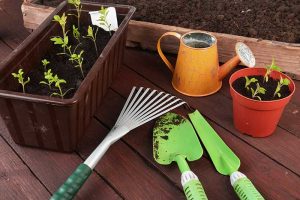
Thank you for your article. I found it after many hours of search. All I wanted to know was “which herbs can I plant together in my tractor tire planter.” I now know. I hope to read more of your articles.
Awesome Judy, glad it was helpful!